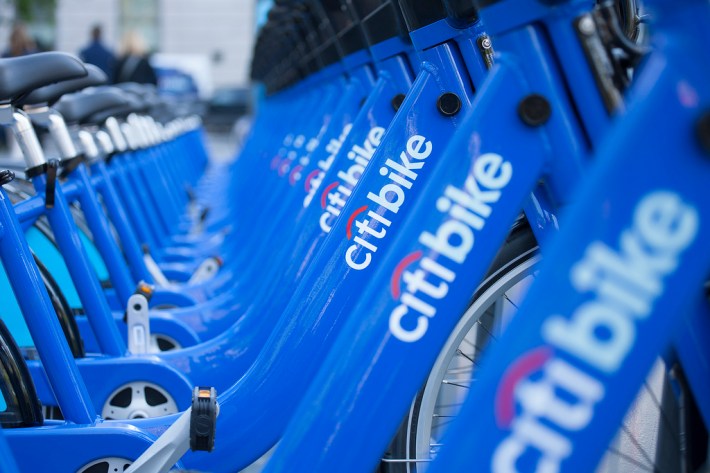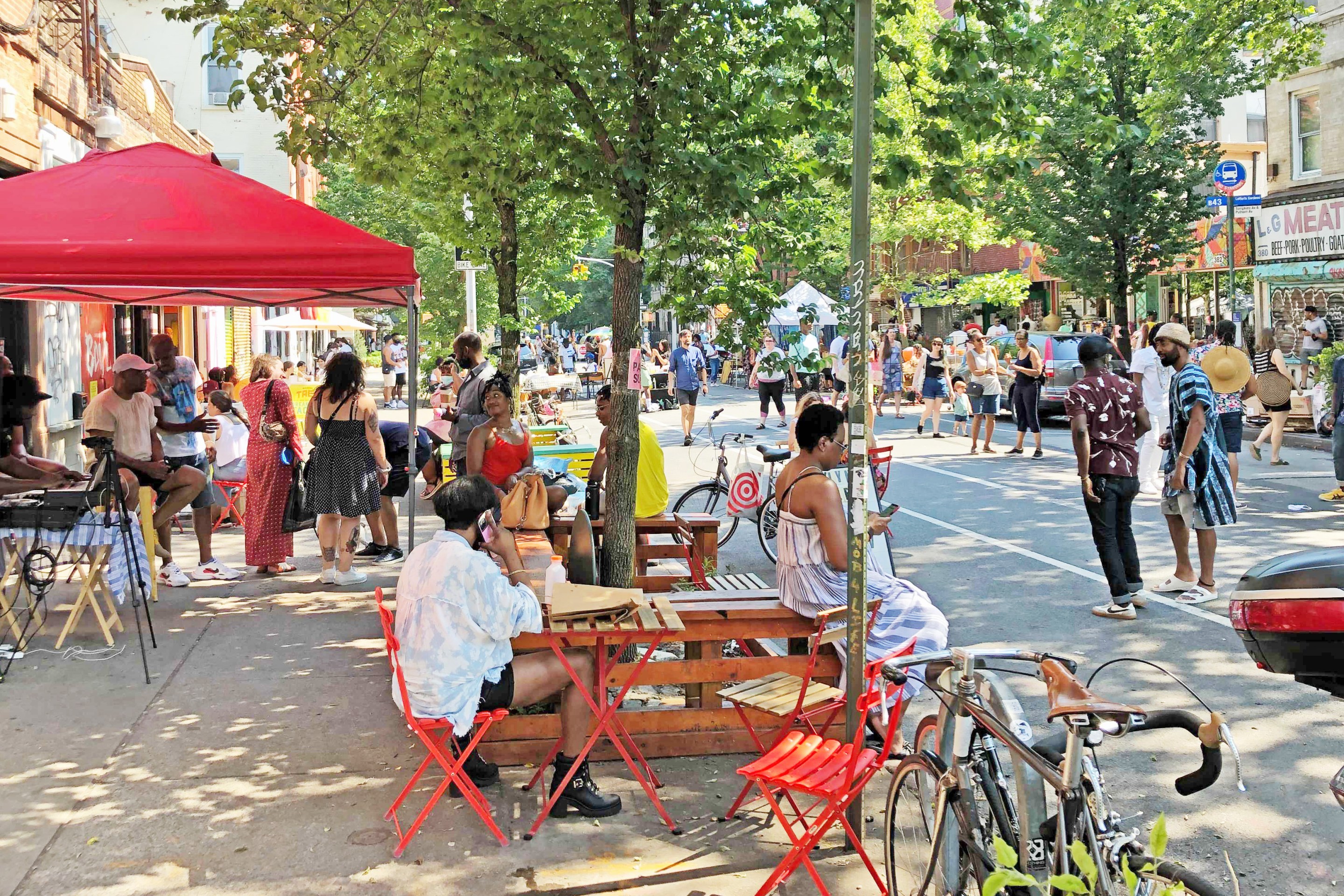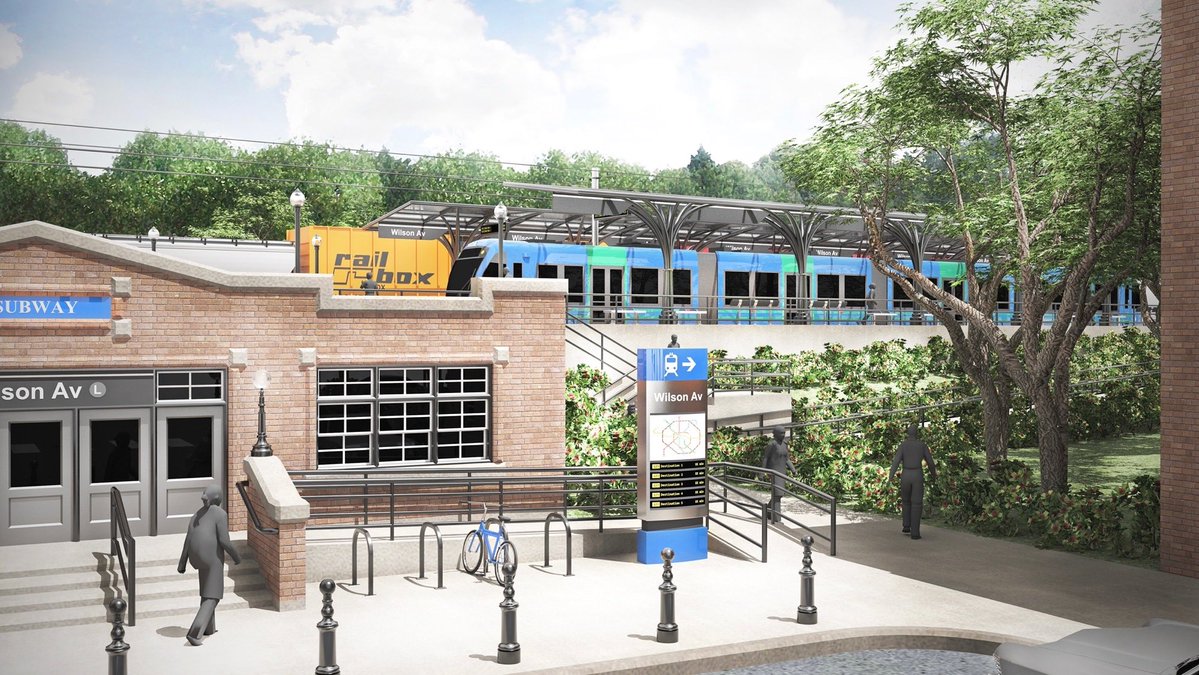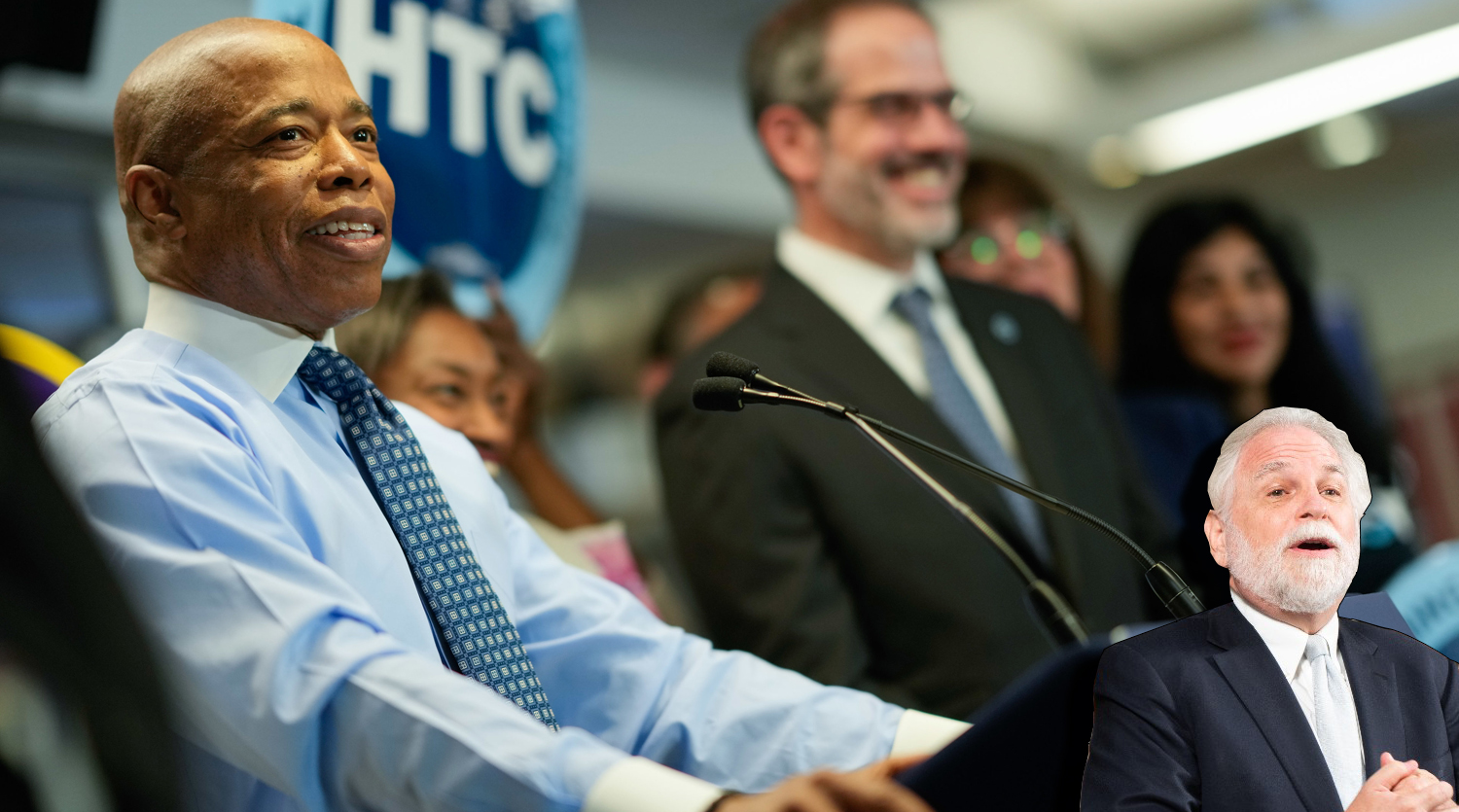After 100 Days, Architects of NYC’s Bike-Share Success Take Stock
5:06 PM EDT on September 18, 2013
By the numbers, Citi Bike has been a huge success, taking weeks to build the substantial ridership that other systems took years to achieve. With the instant popularity have also come growing pains: Ensuring a balanced supply of bikes across the system remains an ever-present challenge, and plans to expand remain just over the horizon, leaving many neighborhoods clamoring for bike-share.
Last night, three of the people behind Citi Bike's planning and operations took to the stage at Baruch College to talk about the program's history and day-to-day reality, and answer questions about where NYC bike-share is going from here. NYC DOT Policy Director Jon Orcutt, NYC Bicycle Share General Manager Justin Ginsburgh, and Jon Sellman, vice president of consumer marketing and advertising at Citi were joined on stage by moderator Charles Komanoff.
NYCBS, the operator of the system, projected 60,000 annual members in the program's first year. After a little more than three months, Citi Bike had already hit 80,000 members. With the system averaging 36,000 trips per day in August, it regularly sees six and sometimes even seven trips per bike per day, outpacing London and other similar systems. The overwhelming demand caught the company off guard when the system first launched. "We had more calls to our call center than we expected," Ginsburgh said. "When you kind of flip a switch for something incredibly new with no real track record, you can get caught flat-footed."
Today, the company has 54 employees in its Brooklyn call center, an in-house bike shop that repairs about 150 bikes each day and makes an additional 50 repairs in the field, and 11 rebalancing teams working three shifts to move about 2,500 bikes around the city daily.
"We are constantly climbing the learning curve of rebalancing," Ginsburgh said, noting that because New York's program is so large and densely concentrated in the core of the city, the rebalancing patterns are different than other cities, like Washington, which are both smaller and more spread out.
"Our initial rebalancing strategy was vehicle-based," Ginsburgh said. "We're starting to realize that fighting congestion during rush hour is a losing battle." Instead, the company is starting to roll out bike trailers to aid redistribution, and has set up three staging areas -- near Penn Station, on Delancey Street, and at Pier 40 -- to shorten travel distances. Ginsburgh also said NYCBS is working with a team of Ph.D students to come up with better systems to meet rebalancing needs.
Orcutt said that DOT is set to release a survey in the coming months of approximately 1,000 users interviewed at bike-share stations about their trip mode choices, in an effort to see how bike-share has changed travel behaviors. In a separate study, the Department of Health is working with Citi Bike on a multi-year, longitudinal study of thousands of bike-share users to learn about the effects of the program on their weight and health behaviors.
That study includes demographic information about users. Ginsburgh said last night that Citi Bike users tended to be white, male, and with household incomes in the six figures, though he didn't have the exact numbers. NYCBS referred us to the Department of Health, which said it was not ready to release this demographic information.
Without the exact data, it's impossible to say how Citi Bike's demographics compare to cyclists overall or to the population of the Citi Bike service area in Manhattan and nearby Brooklyn. Other bike-share systems have attracted more women than cycling in general, but users also tend to be wealthier and whiter than the general population.
Responding to an audience question, Orcutt rejected the idea that bike-share is inherently classist. "I think it's bullshit," he said. "You can leave here today and ride down to the NYCHA projects on Avenue D or over to Farragut Houses." Orcutt also noted that a third of New Yorkers enter the bike-share zone each day. "You're going to do it where the trips are. It's not about where rich people are," he said.
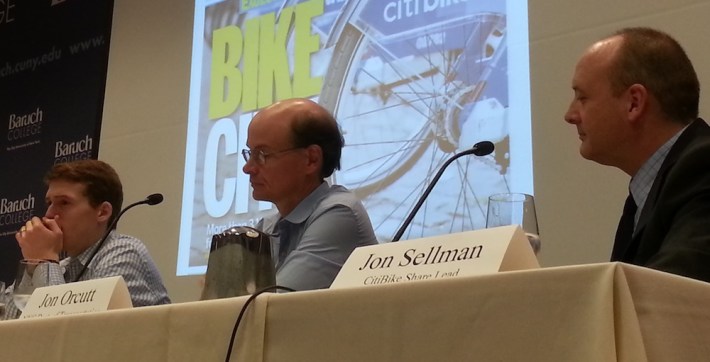
The current system relies on private sponsorships and its own user revenues, not subsidies. Last night, the panelists said they are not looking beyond that model at this time. "There's no taxpayer dollars, and for me that's really important," Ginsburgh said. "Politically, it makes it a lot more acceptable to everyone."
Citi's Sellman noted that the bank was attracted to the sponsorship deal because the saturation of bank branches in Manhattan left it fighting for attention with its competitors, and bike-share presented a unique form of outdoor advertising that would increase the brand's exposure. In addition, Sellman said, sponsoring a service like bike-share would help the bank recover from its unpopularity during the financial crisis.
Orcutt noted that both the city's contract with NYCBS and the Citi sponsorship deal are six-year agreements, lasting beyond the next mayoral term. "We haven't really been thinking out past that about what a different business model is," he said, noting that bike-share's success so far indicates that the program is likely to last well beyond its initial six years. "We are looking at assembling resources to expand the system now, and that's where the focus is."
"We'd love to get more sponsorship," Ginsburgh said, mentioning the Upper East Side and Upper West Side as attractive places for sponsor-driven system expansion. "The crown jewels, in my mind, are still out there, available for sale," he said.
DOT has said, and Orcutt repeated last night, that the completion of bike-share's initial rollout -- which would bring 1,000 additional bikes and 90 more stations to Williamsburg, Greenpoint, Long Island City, and the eastern parts of Bedford Stuyvesant -- is on track for the end of this year. DOT has said that expansion funds could come from a federal Sandy recovery loan and sponsorships that it is still seeking.
Longer-term, Orcutt said the city could support a much larger bike-share network. "I actually think you could quadruple what we have now," he said. (The Department of City Planning's 2009 bike-share study envisioned a network as large as 49,000 bicycles.)
In the nearer term, work to bring the system up to 6,000 bikes continues: A slide from Sellman said that Citi Bike had 5,670 bikes at launch, 5,700 bikes presently, and was continuing to grow to 6,000. Planning for future phases to bring the network to the originally-announced 10,000 bikes and beyond is expected to begin by the end of this year, but few details have been announced yet.
Stay in touch
Sign up for our free newsletter
More from Streetsblog New York City
Wednesday’s Headlines: Four for Fifth Edition
The good news? There's a new operator for the Fifth Avenue open street. The bad news? It's four blocks, down from 15 last year. Plus other news.
MTA Plan to Run Brooklyn-Queens Train on City Streets a ‘Grave’ Mistake: Advocates
A 515-foot tunnel beneath All Faiths Cemetery would slightly increase the cost of the project in exchange for "enormous" service benefits, a new report argues.
Full Court Press by Mayor for Congestion Pricing Foe Randy Mastro
Pay no attention to that lawyer behind the curtain fighting for New Jersey, the mayor's team said on Tuesday, channeling the Wizard of Oz.
Tuesday’s Headlines: Valley of Political Death Edition
Did you see the new poll showing congestion pricing is really unpopular? Ignore it! Good times are coming. Plus other news in today's headlines.
Open Streets Groups Warn of Extra Red Tape to Run Events
Two weeks notice for hopscotch or a yoga class?
